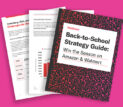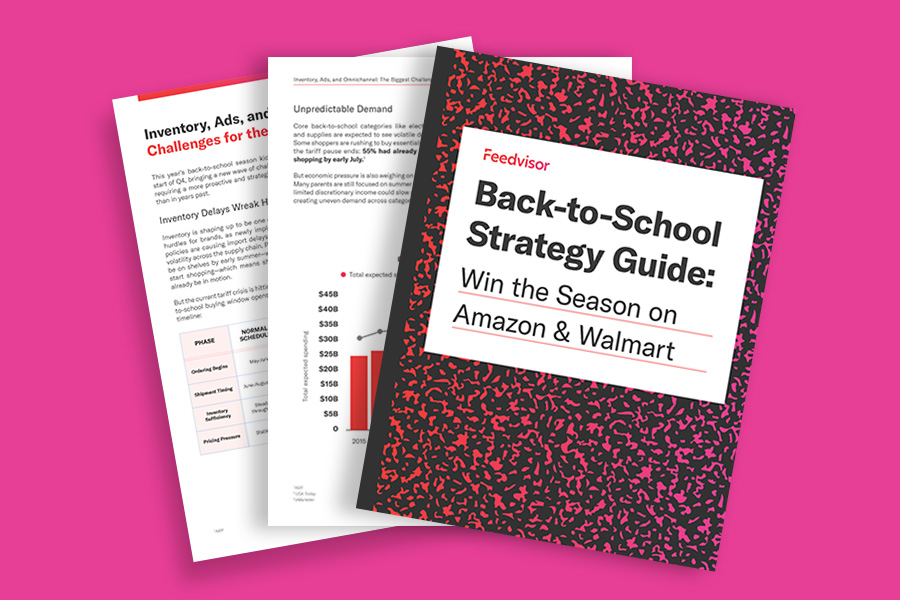
Categories
Latest Posts
Tags
Advertising Amazon Amazon Advertising Amazon Experts Amazon Listing Optimization Amazon Marketplace Amazon News Amazon Prime Amazon Professional Sellers Summit Amazon Seller amazon sellers Amazon Seller Tips Amazon Seller Tools ASIN Brand Management Brands Buy Box Campaign Manager Conference COVID-19 downloadable Dynamic Pricing Ecommerce FBA FBM Holiday Season industry news Multi-Channel Fulfillment Optimize pay-per-click Pricing Algorithm Pricing Software Private Label Profits Repricing Repricing Software Revenue Sales Seller Seller-Fulfilled Prime Seller Performance Metrics SEO SKU Sponsored Products Ads Strategy
Get the latest insights right in your inbox
Resource | Blog

Generative vs. Predictive AI in Advertising Optimization
SUMMARY
Discover the difference between generative and predictive AI, their key use cases, and how combining them can elevate your advertising campaigns for smarter, data-driven strategies.

Rachel Horner
Rachel Horner serves as a Content Marketing Writer for Feedvisor. She has extensive experience in writing for diverse B2B brands, particularly in the tech industry, and is dedicated to fostering meaningful brand-audience connections.
Generative AI is revolutionizing advertising by putting creativity front and center. Tools like Amazon’s AI Creative Studio and audio generator empower brands to deliver fresh, timely campaign assets effortlessly—at the click of a button. But while generating unique ideas and eye-catching content is crucial, it’s only half the battle. Predictive AI adds the other essential piece—helping you anticipate market changes, quickly adapt to fluctuations, and plan your campaigns strategically.
Together, they form a dynamic duo, driving smarter, data-driven advertising strategies. But how do these two technologies differ? How can they work together? And, most importantly, do you need both? In this post, we’ll explore the key differences between predictive and generative AI, highlight key use cases for each, and show you how to leverage both to elevate your campaigns and gain a competitive edge.
INTEGRATED SOLUTION
Learn How AI-Powered Advertising and Pricing Can Drive and Convert Demand
Generative vs. Predictive AI: Differences
As merchants continue to flood Amazon’s marketplace to tap into its vast audience, competition has become the top challenge reported by today’s brands. The solution? AI technology. Specifically, a strategic mix of generative and predictive AI is your key to staying ahead. At a high level, generative and predictive AI can be defined as:
- Generative AI: Using patterns learned from large datasets, generative AI creates original content based on user prompts.
- Predictive AI: Predictive AI uses machine learning and historical data to identify patterns and forecast future outcomes.
Here’s an example: Your competitors have amplified their advertising, driving up costs and dominating visibility for your top-performing keywords. To hold your ground and stay competitive, swift, strategic action is essential.
That’s where predictive and generative AI come in. Together, they uncover opportunities that give your brand a decisive edge. Let’s explore how these two technologies work hand in hand to keep you in the lead.

Integrated Solution
Maximize Your Revenue Across E-Marketplaces With Integrated Pricing and Advertising
Generative vs. Predictive AI: A Breakdown for Keyword Research
Predictive AI
It starts with data consolidation, where AI-driven algorithms consider extensive datasets, including:
- Competitor performance metrics
- Product page content
- Traffic metrics
- Search queries and their estimated volume
- Historical and estimated CPCs
Today’s systems leverage deep-learning models to analyze these massive datasets; deep learning’s strength comes from its ability to identify patterns in vast amounts of structured and unstructured data. This capability enhances AI’s ability to predict outcomes, such as a keyword’s performance, traffic potential, and associated ad spend.
Don’t forget that this is a balancing act — deep learning models help the system strike the right balance by determining which keywords are both relevant to the product and cost-effective.
Generative AI
Generative AI comes into play when creating or generating new keyword recommendations based on these learnings. Traditional AI models often focus solely on matching or keyword density. Using generative AI, though, the system can suggest new keywords that may not have been used before but are semantically related to the product. In other words, the AI can autonomously recommend keywords based on product content and campaign goals, blending both long tail and popular keywords for an optimal strategy.
Traditional AI often limits itself to matching existing keywords or analyzing keyword density. Generative AI goes further, uncovering semantically related terms that might otherwise be missed. This allows it to suggest keywords that align with product content and campaign goals, combining long-tail keywords with high-traffic terms for a balanced strategy.
In Tandem
These advanced AI systems automate keyword research, harvesting, and forecasting, enabling brands to adapt quickly to competitive pressures. By leveraging technologies that incorporate a mix of both, brands can protect their advertising performance while uncovering untapped opportunities for greater visibility and engagement. This proactive approach keeps you one step ahead in a crowded marketplace, seizing advantages others have yet to discover.
Generative vs. Predictive AI: A Breakdown for Ad Creative
Keyword research ensures your ads reach the right audience, while compelling ad creative delivers your message, captures attention, and sets you apart from the competition.
Ad creative is one of the biggest challenges for smaller brands. Hiring a skilled team is expensive, time-consuming, and demands regular updates to keep up with seasonality and new product launches. Enter generative AI—a game-changer for ad creative.
Take Amazon’s AI-powered video generator, for example. This tool uses machine learning to analyze product images, descriptions, and reviews, transforming a single image into a custom AI-generated video that highlights key selling points. It’s an efficient, cost-effective solution for creating standout campaign content.
If generative AI reigns as the king of ad creative, predictive AI is undoubtedly the queen. Together, they create a powerful duo—generating and optimizing ad creative, enhancing product detail pages, and turning clicks into conversions.
Predictive Analytics for Layout Optimization
AI tools can analyze user behavior and data from similar product pages to predict how customers will engage with a product detail page. These tools use predictive algorithms to identify key areas of focus—such as images, call-to-action buttons, or product descriptions—helping brands arrange content for maximum impact.
AI-powered heatmaps further refine this process by pinpointing which sections draw the most attention, ensuring critical information and high-value features are optimally placed.
Generative AI to Optimize Ad Creative
Large Language Models (LLMs) empower brands to create high-quality, on-brand text content at scale. From product descriptions and titles to FAQs and educational materials, these models generate content designed to resonate with target audiences. By fine-tuning LLMs to match a brand’s unique voice, companies can deliver consistent, engaging messaging across platforms, fostering brand loyalty and creating a seamless customer experience.

Outsmart the Competition With the Leading AI-Powered E-Marketplace Optimization Technology
Maximize Profits By Harnessing Feedvisor’s AI to Optimize Pricing and Advertising Strategies.
Final Thoughts
Generative AI sparks creativity; predictive AI drives strategy. Together, they’re your secret weapon for advertising success. From anticipating market trends with precision to crafting creative, standout campaigns, you now know how the combination of these AI technologies empowers sellers to thrive in competitive e-marketplaces.
Made effortless with advanced AI-powered solutions, leveraging both predictive and generative AI ensures your advertising strategy is as innovative as it is data-driven. Harness the power of this winning duo today and unlock your advertising potential with Feedvisor’s AI-powered advertising optimization solution.




